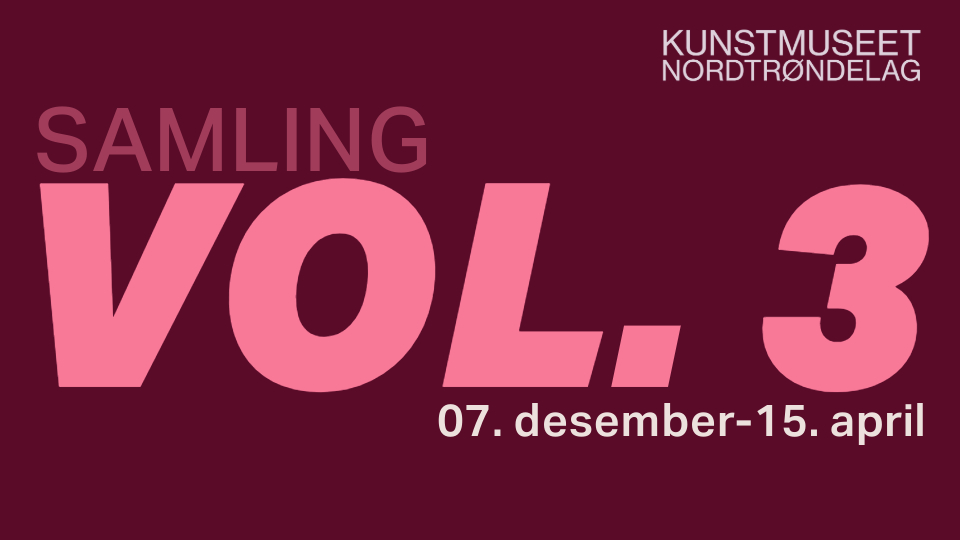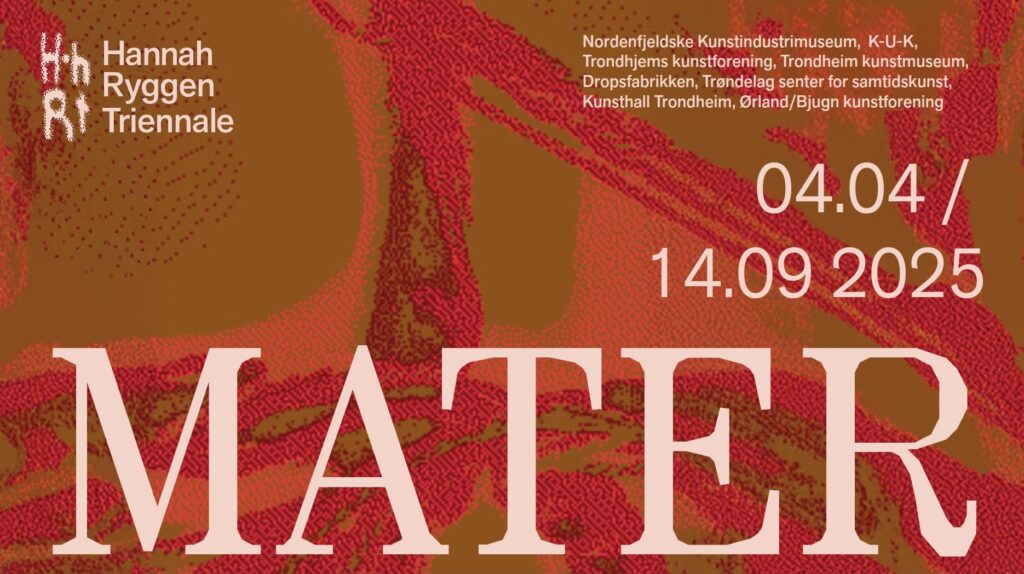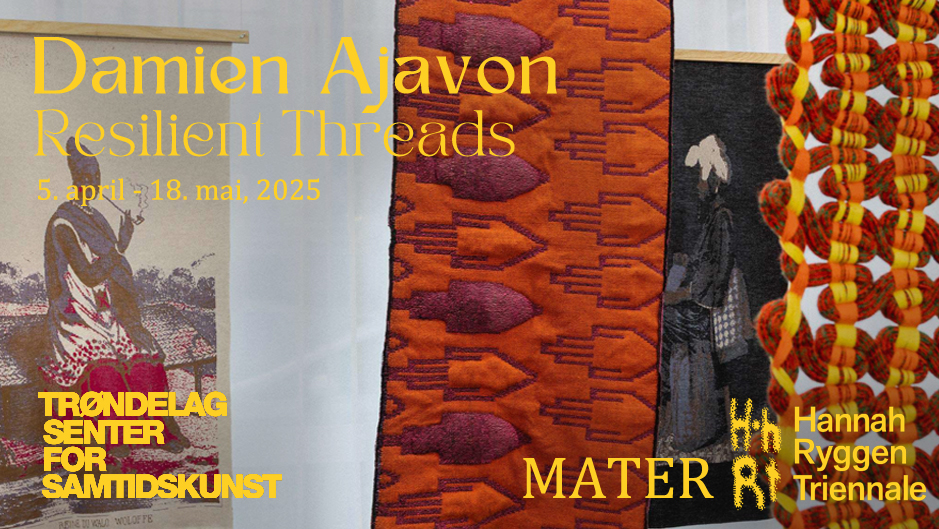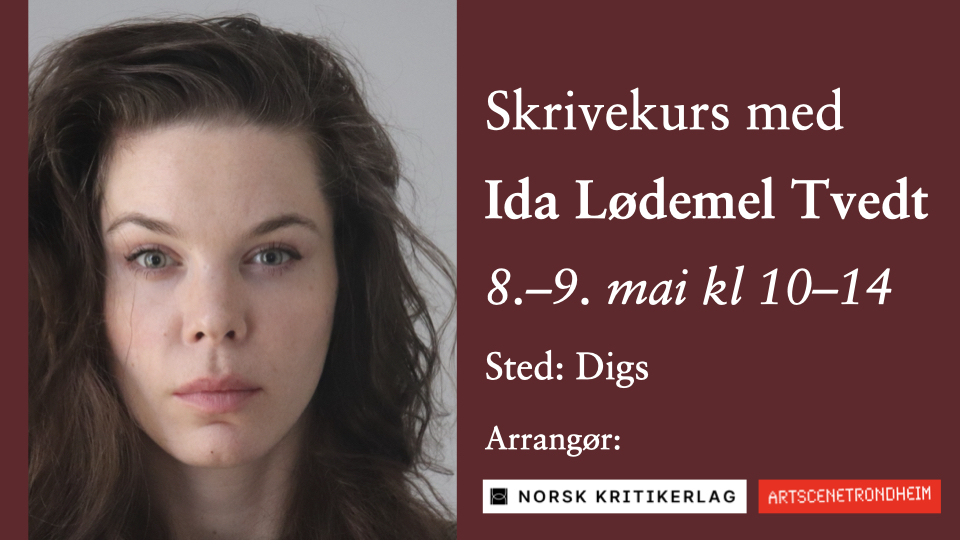Passages and potentials

Interviews, Kunstnerisk forskning under lupen!, Rhea Dall 07.12.23
As head of the recently opened PASS Center for Practice-based Art Studies at the University of Copenhagen, Mikkel Bogh speaks warmly about forging stronger reciprocal links between academia and the field of artistic practice. He believes that too much insistence on making research-based art too academic jeopardises the transformative potential of art. At the same time, he emphasises that the role of the artist involves much more than just making good art! Rhea Dall, director of the art gallery O–Overgaden in Copenhagen, has interviewed Bogh for the series Artistic research under the microscope! Together they discuss what it takes to create a free space for art and the promise and problems of the university, both as a refuge and as a steward of knowledge development relating to forms of practice within the art field.
Rhea Dall: Mikkel, we first met when you were my lecturer in Modern Culture at the University of Copenhagen, way back in the early noughties – at the institute to which you have now returned after many years, first as rector at the Academy of Fine Arts at Kongens Nytorv and later as director of the Statens Museum for Kunst (SMK). Both were important posts. I’ve followed what you do, in fact quite closely in recent years, thanks to your position as chairman of the board at O–Overgaden, where one of your decisions was to appoint me to my current directorship in 2020. But moving on from these major posts you have now chosen to lead a completely new, ambitious, yet smaller-scale research centre with a focus on practice-based research within the art field – more precisely PASS – Center for Practice-based Art Studies. Could you tell us what motivated you to return to the University of Copenhagen and especially to lead a centre devoted to practice-based research?
Mikkel Bogh: The opportunity for me to help build a centre for practice-based research in the art field arose about a year before the end of my nine-year contract with the Ministry of Culture as director of SMK. It all started during my time at the museum. My former workplace, the University of Copenhagen, Department of Art and Cultural Studies, asked me to serve as an expert consultant to the Novo Nordisk Foundation on setting up a specialist arena or hub for ‘emerging researchers’, i.e. PhD students, postdocs and other knowledge producers, in the field of art. At one point, my university colleagues asked if I could imagine myself as director at such a place. Actually, I was very hesitant at first, but the idea grew on me. For one thing, it coincided with a natural caesura in my career, and for another, after more than twenty years as a director, and nearly eighteen in charge of public cultural and educational institutions, I had had enough. Despite some financially difficult years, with budget reductions, declining visitor numbers, and the need for some tough reforms and cut-backs within the organisation, not to mention two years of covid and lock-downs, I really enjoyed my time as museum director, the sense of community, and the many fine colleagues at the museum; but personally I felt a growing need to step back, to find the time and space to think and reflect, somewhere I could breathe more slowly, and where there was latitude for some deeper professional development. At last things took a turn for the better at the museum: there was a new surge in visitor numbers and the finances were looking healthier. It felt like the right moment to hand over the reins.
The fact that PASS is smaller than the national gallery, with its 175 employees and a turnover of over DKK 150 million, is something I welcome. Smaller institutions are more agile. They have the latitude to experiment, to make quick changes, and engage in ongoing debate. Moreover, and perhaps most importantly, PASS is a network organisation that seeks to forge links, to provide new infrastructure and to stimulate dialogue between the various institutional nodes of the art ecosystem: independent players, academies, museums, kunsthaller, universities etc. So although we might be small – just five employees once we’re fully staffed – our network and circle of partners is very broad. It’s stimulating to have an opportunity to draw on the professional experience and relationships one has built up personally over thirty years of working in various parts of the art field. At the same time, it’s a daunting prospect, because I’m very aware that seniority and many years of working at the top in the institutional corner of the art world can be an obstacle to innovative thinking. For that reason alone, it will be essential to cultivate diversity in the workforce wherever possible. And there’s a desire to listen and learn.
One last thing I want to mention in this context is that, ever since my stint as rector at the Academy of Fine Arts, if not before, I’ve been interested in art as a form of reflection and means of exploration, of interrogating, and opening up the world. I see art as a form of basic research with its own idiosyncratic modes of operation. From early on, I threw myself into the debate about the details of assessing artistic research and became an advocate for the idea that the art education system needed a practice-based PhD, in addition to the first and second level degrees (BFA and MFA) that had been on offer in the past. At SMK, where I moved on to next, the number of people we engaged who were studying for PhDs or postdocs in art and curating increased steadily, so in the museum sector as well I saw how artistic practice can play a productive role in the classic but evolving research environment.

RD: Tell us about your vision for PASS – Center for Practice-based Art Studies – a name which, as we’ve already touched on, suggests passage, the passing on of something, or being in transit. But ‘pass’ can also have performative connotations, suggesting pretence or pretending to be something, relating to identity, ‘to pass as or for x’. Is PASS also a place for subverting conventional genres, in other words, where one can ‘pretend’ in the best sense of the word, and thus perhaps even promote thinking outside the box? What kind of visions are there for this new institute?
MB: I recall that you and I had an important phone conversation about the centre’s byname, where we played with the acronym PASS as one of several possible alternatives. You pointed out a number of potentially interesting and relevant meanings wrapped up in the word. Back then, we didn’t talk about the performative, playful or subversive dimension, which I hadn’t thought of before, so thanks for that too! Language always has something more in store and never stops working! The connotations of passage, transition, transfer, transmission, and translation are of course central: the motion back and forth between theory and practice, between different fields of knowledge and discourse, different forms of practice, between institutions and other actors. The somewhat subtler meaning that you allude to – to pass oneself off as something, the use of artifice, cunning and play to find points of access, passages into spaces and institutions that otherwise seem closed – I can certainly add my voice to that. PASS is all about, on the one hand, facilitating the development of artistic work and knowledge in media and materials other than the familiar ones or those that are text-based and promoting a flow into academia, and on the other, encouraging artists to adopt certain academic virtues in their practice, such as clarity about influences and the state of the field of knowledge (Stand der Forschung), transparency with regard to reasoning, methodological development, and so on. The encounter between these perspectives isn’t always easy and comfortable, as you yourself know very well, given that your own PhD was rooted in practice and curating. The clash between genres, in other words, between practice-based knowledge production and academia, can be a source of confusion, if not outright anxiety, for people on both sides of the fence. But also often of fascination, a meeting of worlds and cultures, each an outsider to the other, that throws up hybrid, boundary-breaking forms and ideas. To my mind, so far we’ve only glimpsed the outline of something much bigger. It’s a growth that PASS wants to contribute to.
The vision is that in a few years PASS will be a recognised and regular place of encounter for people who work with knowledge production in the course of their artistic, curatorial, or academic practice, or elsewhere in the museum and conservation sector and beyond, people who want to exchange ideas and experiences on topics of shared interest. What I can tell you is that we have already brought together people with various art-world backgrounds for workshops and seminars on archival research and ocean space, and we’ve had discussions about writers such as Doreen Massey, Silvia Federici, and Kathryn Yusoff. And everything revolving around the question of how theory can inform practice and vice versa.
RD: PASS will bring together numerous researchers who are already doing practice-based work at the Department of Arts and Cultural Studies at the University of Copenhagen – while also, of course, building a network of associated researchers. The aim, if I understand it right, is to progressively expand the interface between the practicing art field and academia. I know that you’re still in the process of constructing or building the centre itself, but can you say how you envisage the make up – how many artists, how many art experts and the like? And what sort of objectives this composition will reflect?
MB: Exactly – an expansion of the interface! It’s important to emphasise that people connected to the University of Copenhagen or to the department where we’re located won’t be favoured above others. PASS is a national centre which was set up to build bridges and create an environment for research and the exchange of ideas across institutions, genres and positions within the art world and art research – in principle also in the Nordic countries and internationally. The notion of passage that we were just talking about, the transverse dimension, must be at the heart of the centre’s activity and will hopefully be reflected in the staff and our circle of collaborators. So far, in addition to myself, the staff at the centre are the coordinator, and the Danish visual artist Mia Edelgart. We are currently inviting applications for a postdoctoral position in publication, to focus on publication in the broadest sense of the word: research can be communicated via anything from experimental printed material and exhibitions, to web-publishing and performance. It’s a field we intend to explore further. In addition, we’ll be joined from 1 February onwards by associate professor Martha Fleming PhD. With her broad experience of collection research, scientific historical studies, archiving, curating, and artistic practice, she will be able to nudge the centre in many interesting directions, not least one that helps us become a place for contextualising historical analysis. Among the most obvious PhD students who we will be reaching out to with our courses and seminars, I would estimate that roughly 20% are visual artists or curators working on dedicated, practice-based research projects. But since several of our courses are open to anyone who wants to take part, it’s difficult to know in advance who will show up. But it looks like a majority of those who want to take part in the ongoing discussion about new perspectives on the profession and its practices are visual artists. I for one think the presence of visual artists in the university context would be hugely enriching. There’s no tradition of this in Denmark, where, for better or worse, art academies are independent institutions that lack any contact with universities. As a result, we have tended to inhabit different worlds, with the academics regarding artists and their work primarily as objects for analysis and interpretation (which is perfectly fine as far as it goes), rather than as partners in an investigation of shared interests.

RD: Practice-based research – artists who do PhDs and postdocs, or curators and other art professionals who take artistic practice as the starting point for research rather than the other way around – has indeed been an increasing trend or an expanding field for close on twenty years, a growth that has happened in parallel to the streamlining of art academies across Europe in response the Bologna accords and the need for standardised qualifications in a field that has traditionally been less than fully regulated. A consensus of critical voices has described this ‘educational turn’ as an academisation of the art field, and generally speaking, evaluation and research are metrics that could be accused of encouraging schematic or formulaic thinking about the typically ‘wilder’, ‘freer’, or more ‘idiosyncratic’ ways that artists work. What are your own thoughts on this debate, which you were probably involved in while at the Academy of Fine Arts? What opportunities and constraints do you see here?
MB: I was indeed involved in the debate, and it’s still on-going. For me, there’s something beautiful in the fact that, while the political and theoretical discussion rages on about how the practice part of a research project should be defined and assessed, artists and curators carry on with that same practice, both within and outside the framework of PhD programmes. Through the power of example, artists today are slowly opening up a field for new, interdisciplinary research, where there’s no sharp dividing line between academic research and the artistic-aesthetic laboratory. To some extent, I share the criticism or concern that many have expressed about the academisation of artistic practice. Nobody wants some kind of nice, institutionalised, certified research art, or what some people refer to – not without malice – as ‘PhD art’. Neither does anyone want to entice every artist who does a PhD away from the art world and into regular, traditional university research, where they would lack the sounding board of their active art practice. It’s fine when that happens – and it does – but the essential thing about the PhD degree for artists and curators is that it helps to consolidate a practice, not by smoothing it out or taming its ‘wilder’, more idiosyncratic aspects, but rather by maturing its elements of reflection and writing practice, which can lead to heightened awareness of the individual perspective and methods in ways that can also be shared with others.
A moment ago you yourself spoke about ‘subverting’ institutionalised genres and schematic thinking, and that’s precisely what I see happening: artistic PhD projects and the profiles that emerge from them have the potential to expand research practice from within, since they introduce materials and methods into research that have the power to challenge our understanding of how knowledge and knowledge production function. But here again, what we’re talking about is an interface that needs constant calibration, and if we insist too much on the academisation of art in connection with the PhD degree, then we lose the transformative potential that art can hold for academia. Another thing is that a PhD in artistic or curatorial practice is by no means everyone’s cup of tea. It’s the same thing in academia: the number of academic graduates who go on to do a PhD is small, not just because scholarships are few, but also because it’s a route that calls for a special kind of discipline, determination, orientation, and interest. It’s only worth submitting to the demands of a PhD if you believe it will help you develop and enhance your practice.
RD: Claire Bishop recently took a stance on ‘research-based art’ with her lengthy manifesto Information Overload in Artforum, where she attacked ‘research’ for creating a genre of effectively soulless works that were far too dependent on the medium of reading. Do you see the contours of a particular genre taking shape, when you head out to talk with practice-based researchers – especially artists – in conjunction with your work at PASS? Or perhaps more importantly, what do you think of Bishop’s remarks?
MB: To be honest, I think many visual artists and academic researchers share Bishop’s view. And I also consider it important to sound the alarm if in this context we notice any tendency to constrain artistic freedom or to undermine the intricacy and obscurity of expression. In this respect it can be a bit discouraging when you notice signs of what could be described as institutionally imposed modes of activity. But as I say, I’m not as worried as she is, and based on my experience of recent publications and exhibitions relating to the submission and defence of PhD degrees, I don’t recognise the picture she paints. She raises a perennially important question about what the institution of the PhD does for the visual arts, but her contribution to the debate can be seen as, well, a little too manifesto-like and proclamatory. She starts from the premise that artists must create good art. That’s hard to disagree with. But artists do other things as well: they investigate and study relationships and cross boundaries between all kinds of disciplines in doing so, and the outcome of this work is not exclusively the production of ‘good art’; sometimes the result is a new field of knowledge, or bringing to light new connections and unseen contexts. It can be a slow process that doesn’t necessarily culminate in great art, but rather in texts, films, drawings, performance, and other things, or a good mixture of them. But artists rarely have time to work in this way, because usually they’re too busy producing material for exhibitions and earning a living. The PhD process – especially in the Nordic countries, where we are lucky to have a range of scholarships for this kind of thing – can be an opportunity for an artist or a curator to follow a different path than the one the art institution usually imposes on them. It can amount to a free space.
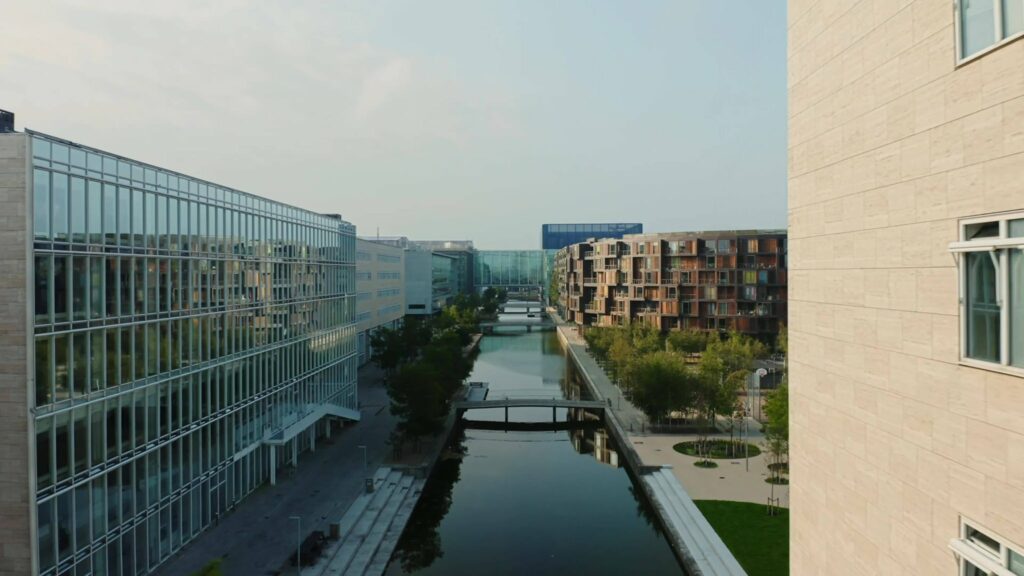
RD: For many years, I have thought of research, and with it the umbrella of the educational institution, as a kind of special refuge from the rigours of a labour-of-love work culture, which is what it’s like for many artists and cultural workers – a refuge which, incidentally, I myself made use of back in 2012–15, when I went to Berlin on a research grant from Copenhagen to set up the PRAXES institution. It was an arrangement that gave me more time and space to reflect on a single artistic practice. At the same time, it isn’t always a refuge without drawbacks – insofar as knowledge is of course also power and thus requires discipline. This is how Fred Moten and Stefano Harney put it: “… it cannot be denied that the university is a place of refuge, and it cannot be accepted that the university is a place of enlightenment. In the face of these conditions one can only sneak into the university and steal what one can. To abuse its hospitality, to spite its mission, to join its refugee colony, its gypsy encampment …”1 What are your thoughts on the role of the university, as both a refuge and steward of knowledge development, in relation to practice in the art field?
MB: And that’s precisely my point. The art academy and the university can be places of sanctuary, especially if they offer a job or an opportunity to study. They offer a measure of protection – from oversight, the rigours of earning a living, a demanding work culture, the imperative of turnover. But it is of course also an institution that imposes discipline and a whole series of specific requirements relating to performance, a place where output is measured by certain norms. In other words, the educational institution is a place governed by rules and special protocols, but where a degree of freedom is sacrosanct, a general laboratory for thinking and practice development that you won’t find many other places. Well, in the studio perhaps. But as Daniel Buren pointed out some decades ago2, the studio is also a special place with its own rules and traditions, but it isn’t independent of the art institution in which it’s embedded. So yes, most sanctuaries have their drawbacks and own forms of pressure. But another thing that Moten and Harney say is that you have to exploit – but not abuse – the hospitality and flexibility that are there, to soften and shape the respective institutional protocols.
However, I don’t think the university and the academy are the only places left that offer such opportunities. Museums and exhibition venues can also provide space, free time, and openings for the artists they collaborate with and whose works they show. Not entirely without demands and obligations. But as places where people listen, develop and create things interactively and where new knowledge can emerge – somewhere between a practice and an institution with all its knowledge, connections, and resources. PASS is not an exhibition venue, but when I look for prototypes and models for how it could be run, it isn’t the classic university research centre that I think of so much as the best exhibition venues I know. A receptive space through which many ideas, practices, and people can pass.
Original text translated by Peter Cripps / The Wordwrights
